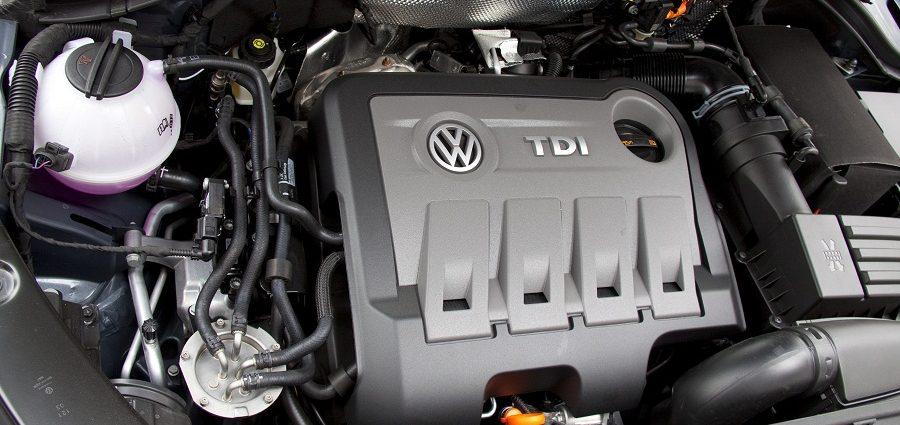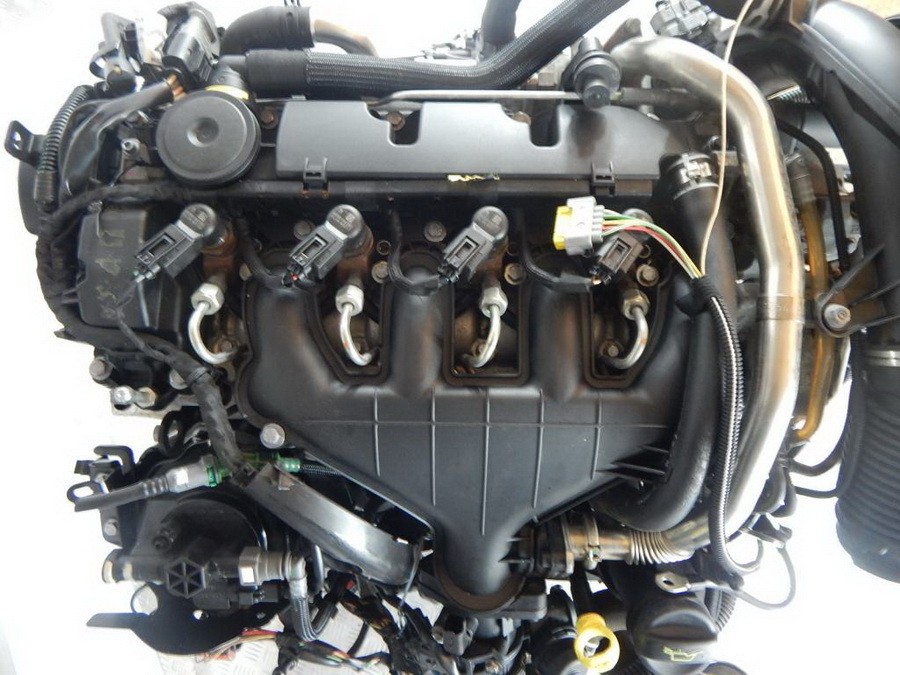
2.0 TDi engine in VW and Audi car models - is it worth buying the unit?
Content
- 2.0 TDi engine - basic information. Does it have CR and Common Rail?
- Which VW and Audi models are equipped with this powertrain?
- What are the engine codes for the Volkswagen Group?
- Scandal related to the unit from the EA189 family - Diesel Gate
- Implemented solutions that made the installation environmentally friendly
- 2.0 TDi and pure dual dosing technology - what is it?
- How do dual dosing catalysts work?
- 2.0 TDi engine - the most common problems
- Premature failure of the oil pump drive shaft
- Should I buy a 2.0 TDi engine? Does its damage lead to high repair costs?
At the very beginning, it should be noted that the 2.0 TDi engine is available in many different modifications that were produced in 2003 - to the present. The unit is also referred to as 2.0 TDI PD, CR or EVO. We present the most important information about this motor.
2.0 TDi engine - basic information. Does it have CR and Common Rail?
Extension of the abbreviation TDi Turbocharged Direct Injection. The term is marketing in nature and is assigned to turbocharged power units manufactured by the Volkswagen Group. They can be equipped with a turbocharger or an intercooler. The blocks are installed on Audi, Volkswagen, SEAT and Skoda cars. They also operate Volkswagen Marine boats as well as Volkswagen Industrial Motor engines.
Other functional designations refer to the components that make up the equipment of the motorcycle. In the case of the PD, this refers to direct fuel injection from the Garett turbine. CR, on the other hand, is related to common rail direct fuel injection. The first variant, 2.0 TDi, has a power output of 140 to 170 hp, while the second one has 140 hp.
The EVO suffix was assigned to the unit after changes that resulted in improved engine smoothness - reduced fuel consumption, reduced engine vibration, reduced emissions, quieter operation, increased power and torque. The newer 2018 version has also been adapted for possible integration with the Mild Hybrid system.
Which VW and Audi models are equipped with this powertrain?
Among the vehicles equipped with 2.0 TDi engines, there are both car Volkswagen and Audi. These are popular models that can be seen on the street every day. As for VW, these are:
- Past B5;
- mk5 jetta;
- MK5 Golf;
- Turan;
- of Arteon.
In turn, Audi cars with a 2.0 TDi engine include:
- A4 B7;
- A3 8P;
- AP B7;
- IN 8;
- A6 C6;
- TT MK2.
What are the engine codes for the Volkswagen Group?
Individual versions of the 2.0 TDi engine differ in design details. This is due, for example, to the costs of possible maintenance or the prices of spare parts. Some drivers consider BKP, BMP, BWV, BVE, BHW, BMA, BVD models risky purchases. The fail-safe units are CFHC, CBEA, CBAB, CFFB, CBDB and CJAA. BKD, BMM, BUY, AZV or BMN blocks can also be good choices.
Scandal related to the unit from the EA189 family - Diesel Gate
The EA189 family of engines has been at the center of a scandal involving falsification of the actual amount of exhaust gases emitted. The German manufacturer has installed efficiency-reducing devices in cars to comply with EPA emissions regulations. As a result, the company was fined $14,7 billion. As part of the sanctions, the group was also required to inform owners of vehicles with a 2.0 TDi EA189 engine about the car buyback program.
As a result of this practice, Volkswagen introduced a new unit in 2015, the EA288, which is now also used in production vehicles. The unit reaches power from 74 hp. up to 236 hp
Implemented solutions that made the installation environmentally friendly
With the advent of 2019, the technology of the 2.0-liter diesel engine has been updated. This was done for the new VW Golf - the 1.6 TDi version replaced the 6 TDi, changes were made to ensure that the unit complies with the norms set by the AP Euro XNUMX standard. One of the consequences was that the upgraded 2.0 TDi engine began to have a higher work culture.
This was achieved by optimizing the combustion process and reducing pollutant emissions. The dual dosing technology in the exhaust system has converted the vast majority of nitrogen oxides into environmentally friendly substances. The improvements also included a 25% increase in the efficiency of the low pressure EGR cooler. This limits the formation of nitrogen oxides in the combustion chamber during high load phases, such as during dynamic driving.
2.0 TDi and pure dual dosing technology - what is it?
Vehicles such as the Golf, Tiguan, Passat and Arteon, as well as vehicles from other Volkswagen Group brands, use dual dosing technology. It has been implemented in transversely and longitudinally mounted engines, and there are plans to further adapt it to work with a 48V mild hybrid system.
Dual dosing works by having two SCR catalytic converters working together to separate nitrogen oxides into water and nitrogen using AdBlue urea solution. Currently, Euro 6d ISC-FCM AP emission standards allow only 80 milligrams of NOx per kilometer. Double dosing was used, for example, in the new Golfs with the 2.0 TDi1/2 engine, so that they could be approved for production. Compared to previous versions, the technology reduces nitrogen oxides by as much as 50%, which reduces exhaust emissions.
How do dual dosing catalysts work?
The 3,4 liter SCR oxygen catalytic converter is located directly behind the engine. In addition, the device also has the function diesel particulate filter. The main function of the component is the conversion of nitrogen oxides at waste temperatures ranging from 220 to 350 degrees Celsius. Efficiency is estimated at 90%.
A second SCR catalytic converter is installed in the floor of the vehicle. Its capacity is from 2,5 to 3,0 liters. It is responsible for most of the conversion of nitrogen oxides, especially under heavy loads and impurities at high temperatures, even above 500 degrees Celsius. They are cooled up to 350 degrees Celsius. This makes the 2.0 TDi engine more environmentally friendly.
2.0 TDi engine - the most common problems
In the case of the 2.0 TDi engine, various breakdowns can be encountered. These include fuel injector failure, oil pump drive shaft premature failure, DPF clogged, timing belt tensioner damage, cylinder head crack, or dual mass flywheel damage. How to recognize these faults?
Defective fuel injector
Fuel injector failure is quite common. Symptoms may include engine misfiring, erratic idling, oil leaks, and poor performance. Repairs may include cleaning them if they are clogged, replacing the gasket if it is damaged, or the entire injector. If an old component is replaced by a new one, a mechanic visit is required.
Premature failure of the oil pump drive shaft
There may also be premature failure of the oil pump drive shaft. The most common symptoms will be a low oil pressure light, an elevated engine temperature, or a noisy oil pump. To solve this problem, you can replace the entire component, the hex or balance shaft and the corresponding gears. You will probably also need to remove the subframe. This malfunction is one of the most expensive to repair.
DPF particulate filter clogged
There are also problems with a clogged particulate filter - DPF. Signs to look out for include a DPF engine light on, limp mode, engine running slowly, heavy black smoke, or excessive oil consumption. Here, the vehicle owner can choose one of two options. The first is to clean the part, and the second is to completely replace it. If someone decides on the second one, they will probably also have to replace the old sensors with new ones. Cleaning is the cheaper option.
Timing belt tensioner damage
Regarding the damage to the timing belt tensioner. Most often, this is manifested by a characteristic ticking sound that comes from the 2.0 TDi engine. There is also a lack of engine ignition, low oil pressure or thick smoke coming from under the hood of the unit. Here, the best solution would be to buy the entire timing belt kit, since it also includes a water pump and coolant. This will also make installation easier and a natural way to get rid of other problems since all of these components are usually replaced at the same time.
Crack in the cylinder head
With a cracked cylinder head, the most common symptoms are a lighted coolant indicator, overheating and poor operation of the unit, the presence of gases in the cooling system or water vapor coming from the exhaust system. In the event of a crack in the cylinder head, a complete replacement of the part will be required. This is quite difficult, for this reason it is worth making sure in advance that you give the car to a trusted specialist who will definitely deal with the problem.
Should I buy a 2.0 TDi engine? Does its damage lead to high repair costs?
The Volkswagen Group division has mixed reviews. They do not shine with reliability, mainly due to oil pump or turbine failures. Confidence in this engine was undermined by the famous dieselgate scandal. The dual mass flywheel is also problematic in the 2.0 TDi engine. This is manifested by excessive vibration when the engine is turned off, slipping or hard clutch, and vibration or knocking in the clutch housing.
However, there are drivers who have driven thousands of miles, had no major objections to diesel, and rarely visited a mechanic. There were also no more major faults leading to high repair costs. Therefore, with regular maintenance of the engine, as well as the use of quality fuel, the 2.0 TDi engine can repay you with no repairs and driving pleasure.
